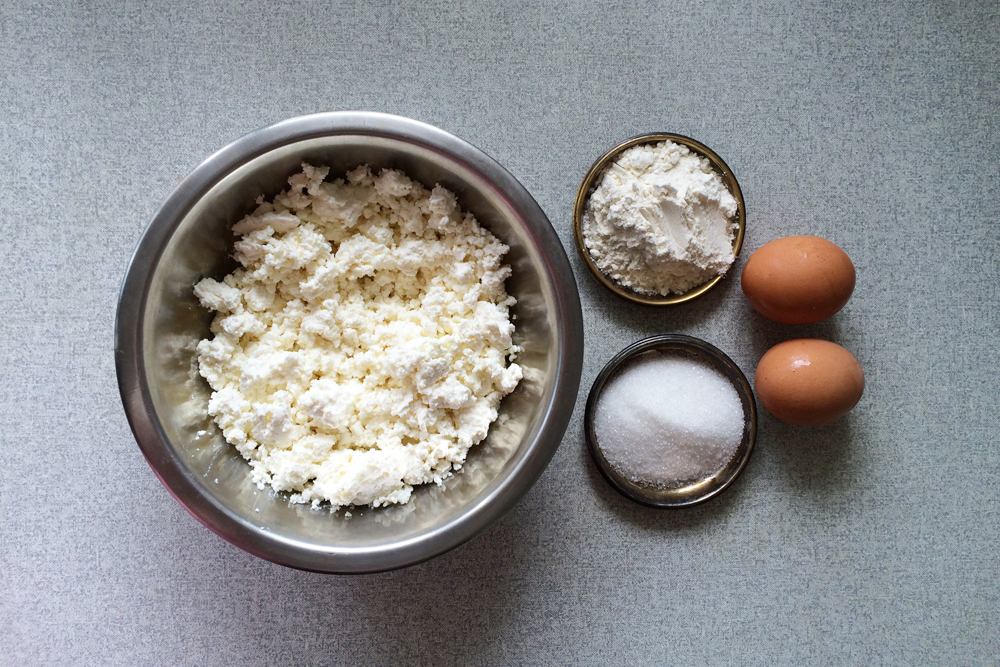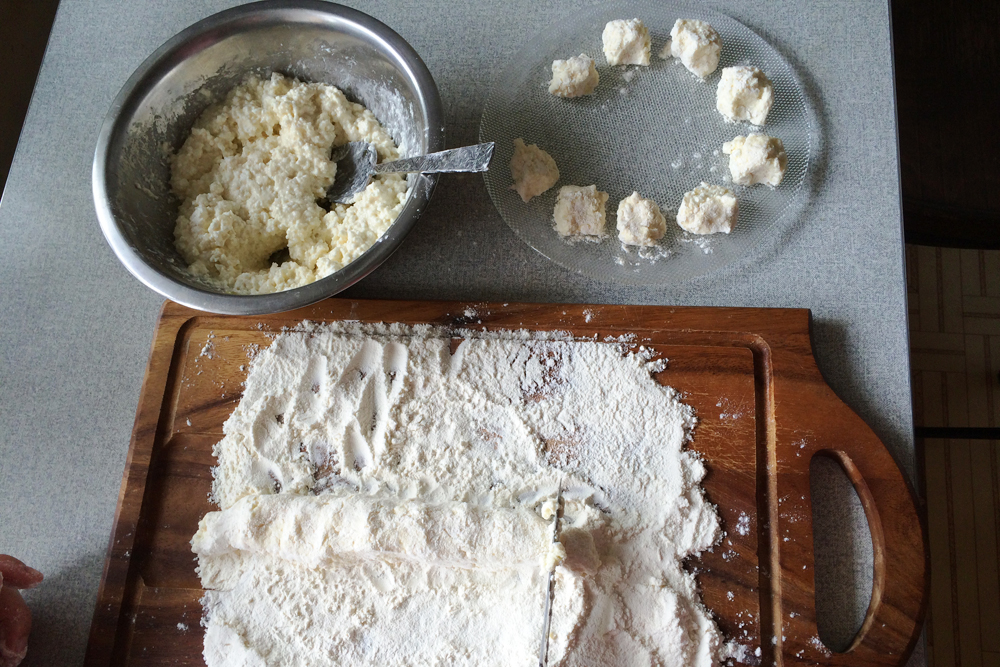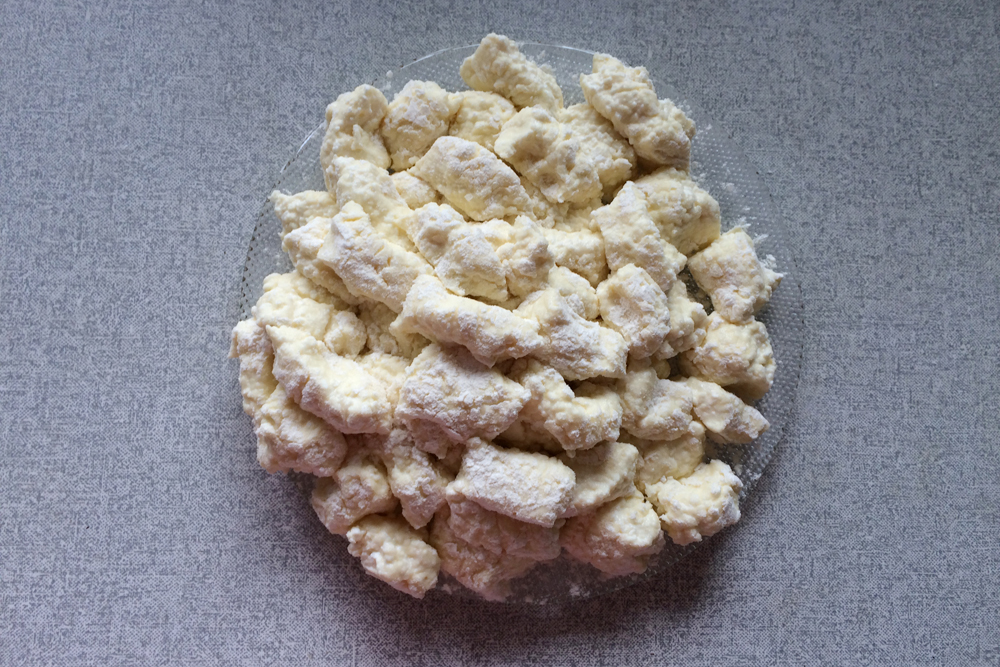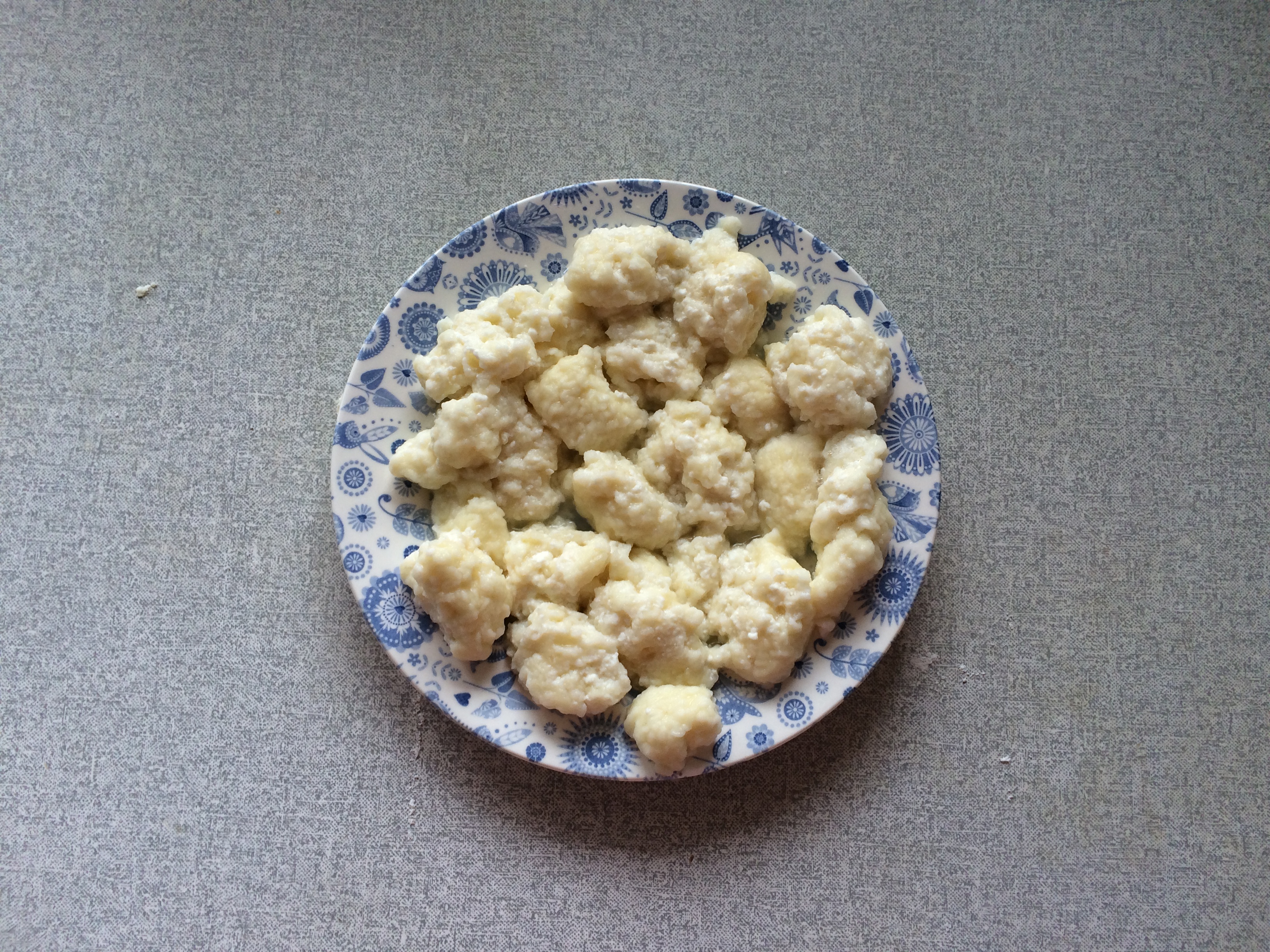This lazy (and so tasty!) kind of vareniki doesn't take a long time to prepare.
Vostock-Photo
Vareniki are kind of a cross between pelmeni, traditional Russian dumplings, and pirozhki, traditional Russian pies. Like pirozhki, they can be stuffed with a variety of prepared fillings, including meat, potatoes, cottage cheese or fruit. Like pelmeni, they are cooked by boiling in salted water.
Vareniki first appeared in Eastern Europe and Ukraine, but their popularity quickly spread across Russia. The dish became known even further afield thanks Nikolai Gogol, who mentioned vareniki in his collection of magical tales based on rural life in Ukraine, “Evenings on a Farm near Dikanka” (1831-1832): 'Patsuk opened his mouth, stared at the vareniki, and opened his mouth wider still. At that moment, a varenik jumped out of the bowl, splashed into the cream, flipped over and leapt straight up into his mouth. Patsuk opened his mouth again, and another varenik went through the same performance. The only trouble he took was to munch it up and swallow it.’
The price of vareniki has also become a way to describe Russia’s well-being. In 1986, The Economist introduced the Big Mac Index — an unofficial way of measuring purchasing power parity by looking at the cost of the famous McDonald’s burger around the world. Today, the analytical portal for the Russian food industry,
Agro2b.ru, publishes the “Vareniki Index,” which examines the cost of the popular dumplings across the country. In January 2016, Agro2b estimated that the cheapest vareniki can be bought in Siberia’s Omsk Region and in the Republic of Tatarstan. The most expensive vareniki are found in the difficult-to-reach regions of Chukotka and Magadan in the Russian Far East.
Lazy Vareniki
Real, filled vareniki take a long time to prepare, so here we offer you a simplified “lazy” recipe.
Lazy vareniki are boiled pieces of a cottage cheese-based dough without any filling. They are a little similar to Italy’s gnocchi, halushki in Ukraine and kluski in Belarusian. Because vareniki are high in calories (about 260 cal per 100 grams), people usually eat them for breakfast or lunch.
How to make it:
Ingredients:
- 2 cups cottage cheese
- 2 Tbsp sugar
- 2 eggs
- u00bd cup flour
- u00bc- u00bd teaspoon salt
1. To make the dough for lazy vareniki more dense, choose fresh cottage cheese with a 9% fat content. Mix up the cottage cheese with a fork and place it into a bowl. Add the eggs and sugar. You don’t need a lot of flour — sift between ⅓ - ½ cup into the bowl and mix everything together with a fork until well blended.
 Source: Daria Sokolova
Source: Daria Sokolova2. To make the dough less sticky, dust a cutting board with flour. Take the dough from the bowl in several pieces. As the dough can be quite sticky, you may need to wash your hands frequently. Source: Daria Sokolova
Source: Daria Sokolova
3. Roll each piece of dough into a thick strip. Cut each strip into small 1 inch balls. Drop vareniki into a pot of of boiling salted water immediately to prevent sticking. Source: Daria Sokolova
Source: Daria Sokolova
4. Boil for 3-4 minutes until vareniki float to the top. Scoop them out with a slotted spoon or a skimmer and lay in a serving plate. Toss with a piece of melted butter. You can serve vareniki with a topping of your choice: jam, sour cream, honey or any other type of sweet sauce. You can always freeze uncooked leftover vareniki. Source: Daria Sokolova
Source: Daria Sokolova
5. Enjoy!
If you feel ambitious and would like to try making filled vareniki, you can find a recipe here.
All rights reserved by Rossiyskaya Gazeta.

 Source: Daria Sokolova
Source: Daria Sokolova

